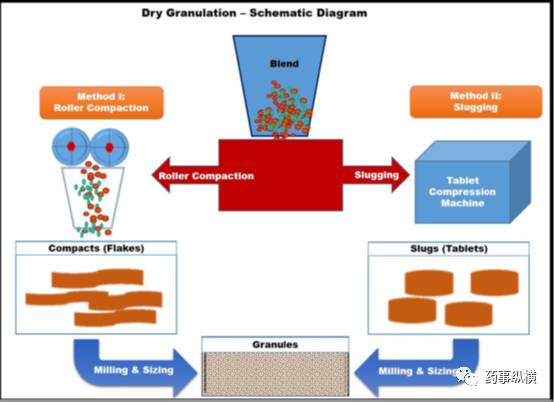Latest Granulation Techniques and Technologies II
Writer: admin Time:2021-01-22 18:11 Browse:℃
New progress of dry granulation
During dry granulation, material can be granulated by compressing or whacking. Compared with continuous development of wet granulation, progress has hardly been made in dry granulation except the pneumatic dry granulation (PDG). The inventor of PDG is Labsoy Aracama. And the advantages and limits are all concluded in the above table.
1. PDG
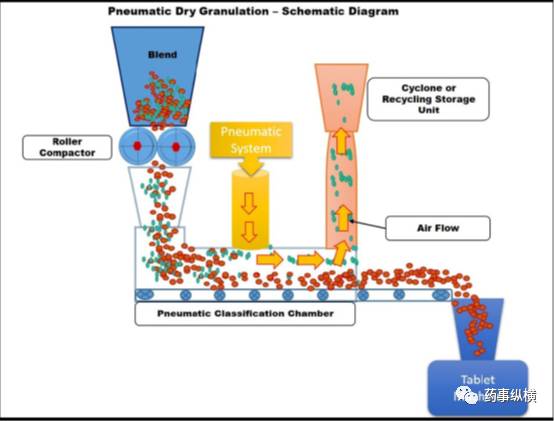
PDG is an innovated dry granulation technology. It prepares granules with good fluidity and compressibility by rolling and air sorting. During production, the roller compressor compresses the mixture of fine granules and powder into compact granules. In the grinding chamber, the fine powder and granules are then segregated from the target granules by the pneumatic system while the target granules can be compressed into tablets. The segregated powder and granules will be transferred to a segregation device (such as cyclone separator) or be granulated in the roller compressor again or stored in another container for later regranulation.
PDG can process any mixed powder into good-fluidity granules and then into tablets whose tensile strength is about 0.5MPa. Compared with normal compression, PDG can prepare good-fluidity granules even in the condition of lower roller pressure or small amount of material. Besides, when the drug loading rate reaches 70-100%, the material can still be granulated through PDG. In addition, PDG has other advantages such as high speed, low cost, less material waste and low dust. However, this technology is insufficient in repeated granulation, adaptability for low-dosage drugs and brittleness.
2. Wet granulation
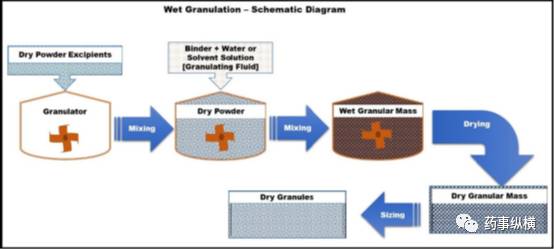
Wet granulation is applied widely, in which the material is firstly mixed with granulating solution and then granulated. Now wet granulation has been developed into steam granulation, moisture activation dry (or wet) granulation, heat adhesion granulation, melting granulation, frozen granulation, foam granulation and reverse wet granulation.
3. Reverse wet granulation
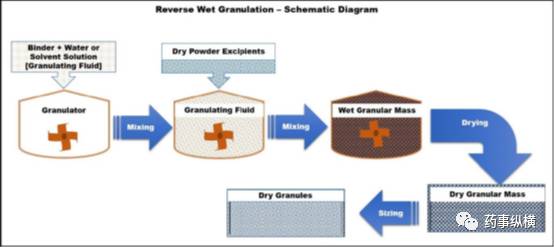
Reverse wet granulation is a new innovation of wet granulation technology. Dry powder is immersed in the adhesive and ground into granules. In reverse wet granulation, adhesion solution is firstly prepared. Then drug material is mixed with the adhesive and other dry excipients are added. Next, the mixture is granulated.
At last, the dried granules are ground. The end granules are of equally good fluidity and compressibility with the granules produced by wet granulation. Besides, compared with granules produced by wet granulation, the granules produced by reverse wet granulation can be compressed to tablets which can dissolve more uniformly in the test.
The main process of reverse wet granulation is to grind large granules. During granulation, adhesive also function as moisturizer to moisturize material and improve dissolving speed of those poorly soluble medicines. At the same time, these medicines can be mixed with hydrophilic polymers more completely and uniformly for smoother drug dissolution. These better granule properties guarantee uniform tablet dissolution.
Compared with traditional wet granulation, reverse wet granulation has the following advantages: The small spherical granules feature good fluidity, uniform moisturizing and dissolution. Besides, this granulation technology can make material contact polymers completely so that it is applicable to process poorly soluble material. Current equipment such as high shear mixing and granulating machine can also be used as the equipment for reverse wet granulation. In addition, reverse wet granulation can be used to produce large-size and low-porosity granules with low amount of adhesive.
4. Steam granulation
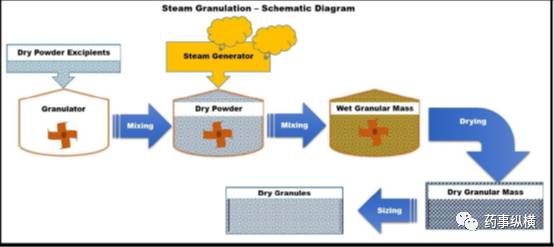
Steam granulation is a new wet granulating technology, in which steam replaces traditional liquid water as the granulating solution. Steam can expand well in powder. During drying, steam can dehumidify in higher efficiency. When steam condenses, the moisture forms thermal film on the surface of powder and granule. Thermal film can evaporate more easily. As a result, only small amount of steam will be used to remove redundant moisture.
The advantages of steam granulation are as follows: uniform steam distribution and expansion, spherical granules of large specific surface area, short granulating time (because of no organic solvent), simple equipment (such as a high shear granulating machine with a steam generator) and so on. However, huge amount of energy will be consumed to generate steam. Besides, it is not applicable to process heat-sensitive material. Compared with products of traditional wet granulation, products of steam granulation are granules that have larger surface area and can dissolve at higher speed.
